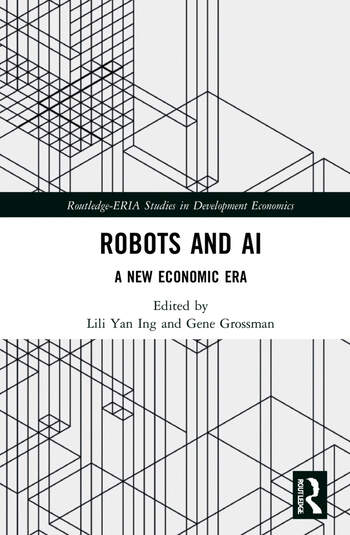Robots and AI: A New Economic Era
 Download (5.48 MB)
Download (5.48 MB)
Publication Type:
Publisher:
ERIA (Economic Research Institute for ASEAN and East Asia)
This book explores how industrial robots, automation, and AI affect international growth, trade, productivity, employment, wages, and welfare.
Robots and artificial intelligence (AI) are seen to impact the size, direction, and composition of international trade flows significantly.
With robots and AI having a huge potential to improve productivity, investments in the field have grown over the years. Global corporate investment in AI has grown almost sixfold to $67.9 billion in 2020 from $12.7 billion in 2015, with the United States and the People's Republic of China having a combined 76% contribution during the period under review.
This book explores how industrial robots, automation, and AI affect international growth, trade, productivity, employment, wages, and welfare. It looks at new approaches on how robots and artificial intelligence affect the world economy by presenting detailed theoretical framework and country-specific as well as firm-product level-specific exercises.
Contents
- Introduction
- The Effects of Automation on Labor Demand: A Survey of the Recent Literature
- Robots, Offshoring, and Welfare
- On the Employment Consequences of Automation and Offshoring: A Labor Market Sorting View
- The Impacts of AI, Robots, and Globalization on Labor Markets: Analysis of a Quantitative General Equilibrium Trade Model
- Telemigration and Development: On the Offshorability of Teleworkable Jobs
- Immigration and Regional Specialization in AI
- Robots and Trade: Implications for Developing Countries
- Automation in Indonesia: Productivity, Quality, and Employment
- AI, Trade, and Creative Destruction: A First Look
Published June 2022.

